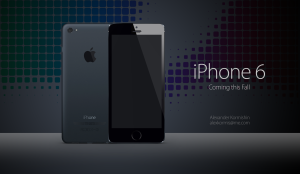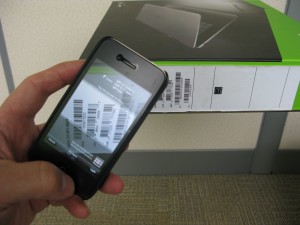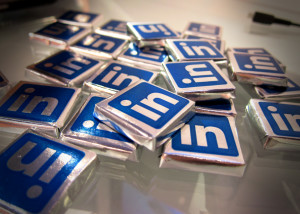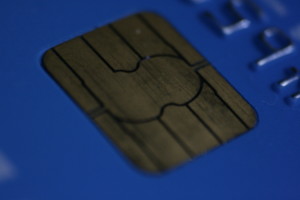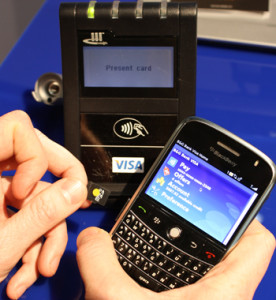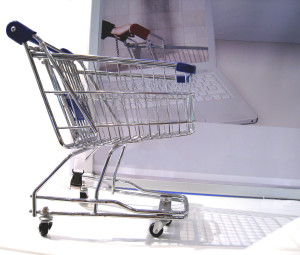August 30th, 2024 by Admin
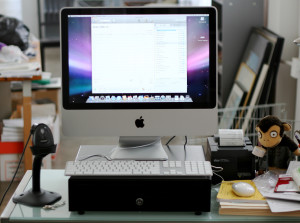
According to a poll by OnePoll on behalf of I Love Velvet titled “Consumer Mobile Point-of-Sale (MPOS) Attitudes Report” over half of retail customers think cash registers are outdated. The poll found that 51% of Americans think the cash register could soon be gone altogether as retailers opt for mobile point of sale systems. Consumers seem to favor MPOS systems allowing the shoppers to check out from anywhere in the store and that they return more often to stores with modern electronic payment technologies. Thirty five percent cited they would shop more often at stores with mobile point of sale payment systems. An additional 17% said they would share their shopping experience via social networking sites and 35% report they likely would tell a friend or recommend stores with these technologies. Forty six percent say that stores that have mobile payment systems seem to be more tech savvy and even more (56%) praise the store for making the experience more convenient and secure. Retailers are struggling to modernize their payment platforms to cut down long lines at registers, and place staff on the floor for better customer access. “It’s a great opportunity for retail store owners to dip into the mobile point of sale arena” said Richard Delos Santos of National Transaction Corporation.
Mobile point-of-sale equipment and software manufacturers are stepping up to the security plate as they seek to pass PCI DSS and other security related issues. As new mobile kiosks and point of sale hardware and software evolve so do the security challenges used to thwart credit card fraud and identity theft. The challenge for point of sale system providers is to create an increasingly secure and convenient way for customers to make electronic payments in-store or on their mobile devices. iPads, iPhones and Android tablets are often used by curious shoppers to compare and contrast features, prices and availability, why not let digital wallets be used to close the transaction? The use and connectivity of these new devices mean more complex security measures are needed to thwart attackers, crackers, and hackers.
In the coming years everything from NFC, to fingerprint readers in smartphones and tablets and even QR codes will change the landscape of mobile payment transaction processing and things are beginning to heat up. An estimated $17 Trillion of mobile transactions are predicted by 2020 and security and adoption will reign king on the streets. It might be time to look into the security and features that a mobile point-of-sale system can add over any existing point of sale systems and cash registers. Mobility is a great tool for a sales force, but security and convenience for the customer is a necessity that will only grow in the future.
If You need help setting up a merchant account, Call 888-996-2273 Today!
Posted in Credit Card Reader Terminal, Mobile Payments, Mobile Point of Sale, Near Field Communication, Point of Sale Tagged with: Android, ipad, Iphone, mobile, MPOS, payments, point of sale, Processing, smartphone, tablet, transaction
September 2nd, 2014 by Elma Jane
While Apple doesn’t talk about future products,latest report that the next iPhone would include mobile-payment capabilities powered by a short-distance wireless technology called near-field communication or NFC. Apple is hosting an event on September 9th, that’s widely expected to be the debut of the next iPhone or iPhones. Mobile payments, or the notion that you can pay for goods and services at the checkout with your smartphone, may finally break into the mainstream if Apple and the iPhone 6 get involved.
Apple’s embrace of mobile payments would represent a watershed moment for how people pay at drugstores, supermarkets or for cabs. The technology and capability to pay with a tap of your mobile device has been around for years, you can tap an NFC-enabled Samsung Galaxy S5 or NFC-enabled credit card at point-of-sale terminals found at many Walgreen drugstores, but awareness and usage remain low. Apple has again the opportunity to transform, disrupt and reshape an entire business sector. It is hard to overestimate what impact Apple could have if it really wants to play in the payments market.
Apple won’t be the first to enter the mobile-payments arena. Google introduced its Google Wallet service in May 2011. The wireless carriers formed their joint venture with the intent to create a platform for mobile payments. Apple tends to stay away from new technologies until it has had a chance to smooth out the kinks. It was two years behind some smartphones in offering an iPhone that could tap into the faster LTE wireless network. NFC was rumored to be included in at least the last two iPhones and could finally make its appearance in the iPhone 6. The technology will be the linchpin to enabling transactions at the checkout.
Struggles
The notion of turning smartphones into true digital wallets including the ability to pay at the register, has been hyped up for years. But so far, it’s been more promise than results. There have been many technical hurdles to making mobile devices an alternative to cash, checks, and credit cards. NFC technology has to be included in both the smartphone and the point-of-sale terminal to work, and it’s been a slow process getting NFC chips into more equipment. NFC has largely been relegated to a feature found on higher-end smartphones such as the Galaxy S5 or the Nexus 5. There’s also confusion on both sides, the merchant and the customer, on how the tech works and why tapping your smartphone on a checkout machine is any faster, better or easier than swiping a card. There’s a chicken-and-egg problem between lack of user adoption and lack of retailer adoption. It’s one reason why even powerhouses such as Google have struggled. Despite a splashy launch of its digital wallet and payment service more than three years ago, Google hasn’t won mainstream acceptance or even awareness for its mobile wallet. Google hasn’t said how many people are using Google Wallet, but a look at its page on the Google Play store lists more than 47,000 reviews giving it an average of a four-star rating.
The Puzzle
Apple has quietly built the foundation to its mobile-payment service in Passbook, an app introduced two years ago in its iOS software and released as a feature with the iPhone 4S. Passbook has so far served as a repository for airline tickets, membership cards, and credit card statements. While it started out with just a handful of compatible apps, Passbook works with apps from Delta, Starbucks, Fandango, The Home Depot, and more. But it could potentially be more powerful. Apple’s already made great inroads with Passbook, it could totally crack open the mobile payments space in the US. Apple could make up a fifth of the share of the mobile-payment transactions in a short few months after the launch. The company also has the credit or debit card information for virtually all of its customers thanks to its iTunes service, so it doesn’t have to go the extra step of asking people to sign up for a new service. That takes away one of the biggest hurdles to adoption. The last piece of the mobile-payments puzzle with the iPhone is the fingerprint recognition sensor Apple added into last year’s iPhone 5S. That sensor will almost certainly make its way to the upcoming iPhone 6. The fingerprint sensor, which Apple obtained through its acquisition of Authentic in 2012, could serve as a quick and secure way of verifying purchases, not just through online purchases, but large transactions made at big-box retailers such as Best Buy. Today, you can use the fingerprint sensor to quickly buy content from Apple’s iTunes, App and iBooks stores.
The bigger win for Apple is the services and features it could add on to a simple transaction, if it’s successful in raising the awareness of a form of payment that has been quietly lingering for years. Google had previously seen mobile payments as the optimal location for targeted advertisements and offers. It’s those services and features that ultimately matter in the end, replacing a simple credit card swipe isn’t that big of a deal.
Posted in Best Practices for Merchants, Mobile Payments, Mobile Point of Sale, Smartphone Tagged with: app, Apple, card, card swipe, cash, checkout machine, checks, chips, credit, credit card swipe, credit-card, customer, debit card, Digital wallets, fingerprint recognition, fingerprint sensor, Galaxy S5, Google Wallet, iOS, Iphone, market, merchant, mobile, mobile device, mobile payment, mobile wallet, Near Field Communication, network, Nexus 5, nfc, payment, payment service, platform, point of sale, products, sensor, services, smartphone, software, statements, swiping card, terminals, transactions, wireless technology
August 6th, 2014 by Elma Jane
Scanning your groceries yourself with the supermarket’s handheld scanner is something you may well have already done. Instead of waiting in line for a cashier to scan, tally and bag your groceries, you save time by scanning as you go and doing your own check-out. However, now in certain grocery stores you can go even further by using a bar code scanner app in your own smartphone to scan each grocery item you’re buying and to expand your shopping experience by receiving personalized offers, syncing with loyalty cards and tracking your budget while you shop. The first supermarket company in the United States to make this available to customers has been the Stop & Shop Supermarket Company LLC, with its Scan It! Mobile app service. Starting with three grocery stores and plans to roll out the capability to 45 more of its stores in Massachusetts, Rhode Island and Connecticut. The company could extend the service to the 400 or so grocery stores it operates in total, including the other states of New Hampshire, New York and New Jersey.
How Can You Use a Bar Code Scanner App?
By using a grocery shopping app like this in your smartphone, you can not only get directions on how to find the store in the first place, but once you’re there, you can also get relevant and specific offers according to where you are in the store and what you’ve already bought. With targeted coupons being sent to your smartphone for each shopping trip, you can save money as well; Stop & Shop estimates possible savings for customers on groceries of between $250 and $500 per year. The grocery shopping app also gives customers access to online accounts, including checking for gas points, A+ School Rewards and personalized savings, as well as to daily information about sales promotions for stores in general. To use the app to scan your groceries, you aim the camera of your phone at the bar code of a grocery item to see the price on your phone screen and to add it to an electronic shopping basket. When you’ve finished shopping, the bar code scanner app transmits the information via the supermarket’s Wi-Fi network to the point of sale, where you pay as you would normally. The same wireless network also allows the retailer to send you personalized information.
Happy customers and increased sales are not the only benefits for grocery stores making such bar code scanner apps available to customers with smartphones. Because the customer has in effect already financed the scanning device (the smartphone), grocery stores can envisage making corresponding savings by reducing the amount of in-store scanners they have to buy, as well as decreasing labor costs, which are typically between 12% and 15% of their total expenses.
Check Your Smartphone Compatibility
Using your mobile to do this means having a compatible smartphone. Currently for the Scan It! Mobile grocery shopping app you’ll need either an iPhone 3GS or 4G, or a compatible Android device. The list validated so far includes Android 2.2 running on Nexus One, Motorola Droid1, Samsung Galaxy, and HTC Thunderbolt 4G. The app can be downloaded for free at the Apple App Store or the Android Market.
Posted in Mobile Payments, Mobile Point of Sale, Smartphone Tagged with: Android device, Android Market, app, Apple App Store, bar code, bar code scanner app, coupons, electronic shopping, HTC Thunderbolt, in-store scanners, Iphone, loyalty cards, mobile app, Mobile app service, Mobile grocery shopping app, Motorola Droid1, Nexus One, online accounts, point of sale, Samsung Galaxy, scan, scanner, shopping app, smartphone, Stop & Shop, Wi-Fi, Wi-Fi network, wireless network
June 20th, 2014 by Elma Jane
The LinkedIn Job Search App available exclusively for iPhone for now, launched today with new tools for job seekers. LinkedIn is already one of the best spots on the Web to network and establish new business contacts and now with a new app designed to help you get hired. The app includes a deep search function to help you find the most relevant job openings. You can tailor your search to filter results by title, location, company, industry, seniority level and more. That could help you spend more time applying for jobs and less time browsing irrelevant posts.
Another handy feature lets you browse jobs LinkedIn recommends for you based on your saved searches, jobs you’ve viewed and information pulled from your LinkedIn profile. This could help ensure you won’t overlook a listing and miss a good opportunity. The feature also helps you browse job posts on your iPhone when you have just a few seconds or minutes to look, but what really sets this app apart from similar job search apps is its integration with LinkedIn. That means you can instantly view information about a company with just a few taps and because virtually every company and business owner has a presence on the social networking site, you’re sure to find information that will help you evaluate a job opening. You’ll even get alerts on your LinkedIn profile when recruiters view your application, taking a bit of uncertainty out of the job search process.
Posted in Uncategorized Tagged with: app, Iphone, linkedin, network, networking, tools, web
June 16th, 2014 by Elma Jane
Credit card companies are racing against tech giants like Apple and Google to create what would thin our wallets forever. The race, which started to replace paper with plastic, is now entering a new phase of combining our cell phones and credit cards. Credit card giant American Express is working on developing a next generation app, which would let consumers shop using their virtual credit cards just like virtual boarding passes on an iPhone Passbook. Amex doesn’t stand alone in the race. Google, Square and Apple are some of the many companies in Silicon Valley, which are working on taking the leap. While Google Wallet and PayPal are some of the available products providing customers with a virtual wallet experience. The credit card companies still continue to benefit being the point of sale for these products. This puts Amex in a unique position, as it doesn’t have to struggle becoming the card customers choose to use. Amex is just a jump away in moving from customers’ wallet to cellphone.
Posted in Best Practices for Merchants, Visa MasterCard American Express Tagged with: American Express, amex, app, Apple, card, cellphone, credit-card, customers, google, Iphone, virtual credit cards, wallet
May 12th, 2014 by Elma Jane
New iPhone and VeriFone-made shell combination that can accept chip and PIN card payments. Apple’s revamp in its in-store mPOS system
In 2009, Apple introduced its EasyPay mPOS technology. It consists of an iPod Touch and a shell made by Infinite Peripherals that includes a card swiper and a barcode scanner.
As first reported by 9to5mac,the iPod is now being replaced by an iPhone while VeriFone is being brought in to provide a new shell which will cater for chip and PIN payments as the US finally gets ready for the switch to EMV. The shell also has a spot above the PIN pad that opens the way for NFC contactless payments, according to Forbes. Apple has long been expected to equip the iPhone with NFC but has so far ignored the technology.
Separately, mPOS giant Square has ditched its Wallet app, pulling it from the Google and Apple stores. The app has failed to take off since its launch in 2011, despite the support of Starbucks. It has been replaced by Square Orders, which lets users order and pay ahead at participating merchants and then pick up their goods when they are ready.
Posted in Best Practices for Merchants, Mobile Payments, Mobile Point of Sale, Point of Sale, Smartphone Tagged with: app, Apple stores, Apple's, barcode, barcode scanner, card, card swiper, chip, contactless payments, EasyPay, EMV, Forbes, google, in-store mPOS, Infinite Peripherals, Iphone, iPod, iPod Touch, Merchant's, MPOS, mPOS giant, mPOS system, mPOS technology, nfc, NFC contactless payments, PIN, PIN card, PIN card payments, PIN pad, Square, Starbucks, swiper, verifone, Wallet app
March 17th, 2014 by Elma Jane
With so much to do each day, it’s easy for a small business owner to get bogged down in details. That’s where your smartphone comes in. With the right apps, your mobile device can automate the tasks that used to be daily chores. Whether you need help keeping track of all your business documents, or organizing your calendar and contacts list, it’s time to let your smartphone do some of the heavy lifting.
Back up your business files. Your work machine contains everything you need for a productive day, including every file and document you are working on. But you can’t always be at the office. With your smartphone and the right apps, however, you can back up and access your business files from anywhere. Dropbox, Box, Google Drive, SkyDrive and iCloud are all solid mobile apps that automate the process of syncing your business files to the cloud so you can access them from any Web-connected device, including your smartphone or tablet. Better yet, any edits you make will be synced across all your devices, so you can stay productive and organized.
Manage new contacts. Swapping business cards is a great networking strategy, but cards are easy to lose, and manually inputting all that contact information into your address book is a chore. So let your smartphone enter all that data into your address books. CamCard (available for iOS and Android) is an all-in-one business card management solution. Just point your iPhone camera at a card and snap a photo. The app’s text-recognition software will pull out the key details and update your address book automatically. It can even search for new contacts on LinkedIn to add a photo and additional personal details for each new contact.
Silence your smartphone. A buzzing or ringing smartphone can be distracting – not to mention embarrassing – during a business meeting. Silencing your phone is simple, but chances are you’ll occasionally forget. That’s why there are handy apps that monitor your smartphone calendar for meetings and appointments, then silence your phone for the duration of that event. You can even whitelist specific numbers so you won’t miss an emergency call. When the meeting is over, your smartphone’s ringer and vibration settings will be returned to their normal state. That way, you can stay focused and free from distraction when it matters most. Android users can try Silencify. For iPhone users, AutoSilent is a good option.
Sync your calendars. Both Android and iOS have built-in calendars to help you plan your week and schedule meetings. But juggling both a mobile calendar and a desktop office calendar is a pain, so why not use your smartphone to synchronize the two? If you use Microsoft Outlook as your business calendar, for example, Google Calendar offers an easy way to link them. And iPhone users can synchronize their mobile calendar with Outlook by plugging their smartphone into their computer and accessing the Calendars tab in the iTunes options menu. Automating the process of syncing your calendars means you’ll never mix up appointments. And if you share your business calendar with your employees, it ensures that everyone is always on the same page.
Sync your social media accounts. A strong presence on Facebook and Twitter can help you engage your customers and grow your business. Mobile apps can help you keep your business profiles fresh when you’re on the go, but reposting those updates on each platform individually can be a chore especially from a tiny smartphone screen. Fortunately, there’s an easy way to automate the process of synchronizing social media posts between your business profiles. Simply visit this page to link your Facebook and Twitter accounts. After that, go ahead and use the Facebook mobile app to post updates, news or promotions to your business’s Facebook page, each post will be automatically funneled to your Twitter followers as well.
Posted in Best Practices for Merchants, Mobile Payments, Small Business Improvement, Smartphone Tagged with: all-in-one, Android, apps, automate, automate the process, automating, box, business documents, business profiles, camcard, devices, dropbox, Facebook, google drive, icloud, iOS, Iphone, linkedin, Mobile Apps, mobile device, networking, organizing, productive, skydrive, small business, smartphone, synchronize, synchronizing social media, syncing, tablet, twitter, web-connected
February 20th, 2014 by Elma Jane
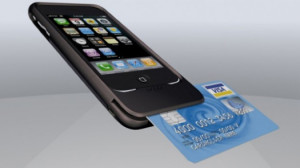
Android-iPhone-Credit-Card-Reader
Several options exist for mobile credit card processing.
Credit card processing on iPhone/ipad/Android/BlackBerry or Tablets – Using NTC’s portable credit card readers, merchants can now swipe credit cards on iPad or Android tablet devices. NTC’s Virtual Merchant solution allows users to download a secure application to interfere your smartphone with our merchant account services seamlessly. The application and credit card processing data on the carriers network or a WiFi connection to the internet.
NTC’s MagTek Bullet Swipe Credit Card Reader for Android Phones and Tablets.
Using any Android 2.2. or higher device you can process credit card transactions securely to the smartphone via Bluetooth and utilize wireless devices internet connection (WiFi or Carrier) to send the credit card processing data encrypted for processing approval.
Security anywhere. With the BulleT Secure Credit Card Reader Authenticator (SCRA), security comes with the flexibility and portability of a Bluetooth wireless interface. Small enough to fit into the palm of your hand, the BulleT enables secure wireless communications with a PC or mobile phone using the popular Bluetooth interface. Not only does the BulleT encrypt card data from the moment the card is swiped, but it also enables card authentication to immediately detect counterfeit or altered cards.
Ideal for merchant services accounts and financial institutions’’ mobile credit card processing, NTC’s BulleT offers MagnaSafe credit card processing security features with the convenience of a Bluetooth interface. This powerful combination assures credit card data protection, transaction security and convenience needed to secure mobile credit card processing with strong encryption and 2-factor authentication. The BulleT is specifically designed to leverage the existing magnetic stripe credit card reader as a secure token empowering cardholders with the freedom and confidence of knowing that their credit card transactions are secure and protected anytime, anywhere. Android Credit Card Swipe Reader for Android Phones and Tablets on your wireless mobile merchant account.
NTC’s MagTek iDynamo Credit Card processing swipe reader for iPhone and Ipad.
Credit card processing on an iPhone has never been easier. Simply attach NTC’s iDynamo card reader to your iPhone or iPad device, install our Virtual Merchant software from the App Store and you’re ready to go. Take advantage of lower credit card processing rates by processing swiped transactions instead of keying the credit card in later and get paid faster. From the company that leads with Security from the Inside MagTek has done it again with the iDynamo, a secure card reader authenticator (SCRA) designed to work with the iPhone and iPad. The iDynamo offers MagnasafeTM security and delivers open standards encryptions with simple, yet proven DUKPT key management, immediate tokenization of card data and MagnePrint card authentication to maximize data protection and prevent the use of counterfeit cards. Mobile merchants can now leverage the power of their iPhone/iPod Touch products without the worries of handling or storing sensitive card data at any time. Ideal for wireless mobile merchant accounts and mobile credit card processing, the iDynamo offers MagneSafe security features combined with the power of iPhone and iPod Touch products. This powerful combination assures convenience and cost savings, while maximizing credit card data protection and credit card transaction security from the moment the card is swiped all the way to authorization. No other credit card reader beats the protection offered by a MagnaSafe product.
Other credit card devices claim to encrypt data in the reader. NTC’s iDynamo encrypts the data inside the read head, closest to the magnetic stripe and offers additional credit card security layers with immediate tokenization of card data and MagnePrint card authentication. This layered approach to security far exceeds the protection of encryption by itself, decreases the scope of PCI compliance, and reduces fraud.
NTC’s iDynamo is rugged and affordable, so it not only withstands real world use, it performs to the high standards set by MagTek as the leader in magnetic credit card swipe reading products for nearly 40 years.
Posted in Credit card Processing, Credit Card Reader Terminal, Credit Card Security, Digital Wallet Privacy, e-commerce & m-commerce, Electronic Payments, Internet Payment Gateway, Merchant Services Account, Mobile Payments, Mobile Point of Sale, Payment Card Industry PCI Security, Smartphone Tagged with: Android, android phones and tablets, authenticator, blackberry, bluetooth, card authentication, credit card processing data, devices, encrypt card data, encrypted, internet, ipad, Iphone, magnetic stripe, magtek bullet, merchant account, merchant services accounts, Merchant's, mobile credit card processing, portable credit card readers, process credit card transactions, processing approval, secure, secure application, secure token, smartphone, swipe credit card reader, swipe credit cards, tablets, transaction security, virtual merchant, wifi, wireless devices internet connection
October 28th, 2013 by Elma Jane
With banks and shops starting to let customers pay by tapping their smart phones on terminals in stores, the future of plastic credit cards is looking shaky.
MasterCard, which has teamed with Coles and CommBank on these ventures, yesterday said Australians were rapidly embracing contactless payments using PayPass and rival Visa’s payWave. At Coles, six out of 10 MasterCard and Visa payments were contactless.
MasterCard head of market development and innovation for Australasia said three out of 10 MasterCard terminal payments were contactless and there were now more than 175,000 terminals nationwide that could accept them. More than 10 million MasterCards in Australia could make contactless payments.
An EMV (Europay, MasterCard and Visa) standard meant all terminals were capable of handling different brands of contactless payments.
The first stage of the contactless payments or “tap and go” revolution began with Visa payWave and MasterCard PayPass in Australia and the first institution to make contactless payments available locally was the Commonwealth Bank in 2006.
The next stage is to use smartphones rather than just plastic cards for contactless payments. Customers still use their Visa and MasterCard accounts, but the transaction is effected using a Near Field Communication sticker placed on the back of the phone, or an embedded, secure NFC element inside modern Android smartphones.
In Europe, NFC-enabled watches, wristbands, key rings and fobs also were being used for contactless payments and there was no reason this couldn’t happen here.
Visa said it had made a “significant investment” in a mobile NFC ecosystem.
“Visa is working closely with partners like Samsung, Vodafone and Optus on a range of mobile payment solutions that use the secure element and prepaid SIM models.”
CommBank, which previously enabled contactless payments from an iPhone housed in a special case, last week said it would let customers pay directly from their Apple phone using an NFC sticker, and from newer Android phones with embedded secure NFC technology.
The new facility, to be rolled out in the current financial year, is part of a revamp of the bank’s smartphones apps.
Coles said contactless payments had increased in the past year by more than 70 per cent while CommBank’s volume of contactless payments had increased six fold in 12 months. Westpac said it was piloting an Android mobile contactless payment application and was also investigating smartwatch payments.
“We also believe that the next big trend after the rise of mobiles and NFC in Australia will be mobile checkouts, where shoppers purchase products and have them delivered within two or three clicks,” a spokeswoman said, and the moves were “as big a market shift as we’ve ever seen”.
Coles also announced a trial of its own contactless payments technology using NFC stickers. Funds would be drawn from Coles Rewards MasterCards. Some 5000 mobile phone tags would be issued in a trial.
ANZ said it was continuing its trial of a mobile wallet for Android phones begun last year, ahead of making the solution available to customers.
“Our NFC pilot with Samsung and Optus is tracking well and we’re also investigating other payment options such as QR codes,” an ANZ spokesman said.
“Given the fragmentation of the market, we will continue to monitor developments before finalising how we will bring a viable mobile wallet solution for our customers to market.”
St George Bank chief information officer said his bank planned to have a contactless phone payments solution in the market “sometime in 2014”.
The bank has previously been reported to be looking at payments via the Pebble and Samsung smart watches.
National Australia Bank, which unveiled its peer-to-peer payments app, NAB Flik, last month, said it was watching how the contactless payments market developed with “less focus on being first to market and more focus on being best in market.”
The Australian reported last month that Apple and PayPal were exploring an alternative to NFC-enabled contactless payments called iBeacons. When you pass close to a store in a shopping centre, a beacon will detect your phone’s presence and automatically alert you to signature items for sale and specials, or offer other information to lure you inside, and process payments.
CommBank last week told The Australian it was looking at iBeacons technology.
Posted in Credit card Processing, Electronic Payments, EMV EuroPay MasterCard Visa, Near Field Communication, Visa MasterCard American Express Tagged with: accounts, Android, banks, checkouts, contactless, embedded, EMV, EuroPay, fobs, Iphone, MasterCard, mobile, mobile wallet, Near Field Communication, nfc, optus, payments, paypass, paywave, phone, plastic credit cards, prepaid, process payments, qr codes, Samsung, secure, shops, sim, smart phones, Smartphones, smartwatch, sticker, store's, Tags, tap and go, tapping, terminal, terminals, transaction, visa's, vodafone
October 22nd, 2013 by Elma Jane
The best place to start understanding your customer is to put yourself into every step of a buying cycle and analyze what influences various purchase decisions.
Who is your customer?
Basic demographics and usually includes the following:
Age range Education level Gender Income level Location Marital status Profession
Many of these basic demographics can be inferred from your interactions with customers. In many cases, you can simply ask them.
Beyond the basics, you will also benefit from more personal data, such as the following:
Interests Activities Political affiliation
That data is harder to access, but there are databases that will allow you to target individuals based on those criteria. Facebook’s ad platform provides an incredible amount of targeting data. You can infer your customer profiles by the types of results you get by running ads aimed at specific target markets. That will help identify the interests of your customers.
What? consider what consumers need to know about a product to make a purchase.
Are there ongoing costs? Does it need anything else to make it work? How big is it? How does it function? How long will it last? How much does it cost? Is there a warranty? What are its specs? What does it look like? What options are there? What sizes and colors are available?
To find those details, shoppers will seek different sources: articles, websites, blogs, and actually looking at products and trying them on. Make sure you understand the “what” questions for your products. Then, provide answers to those questions.
Why? The “why” questions are important. Do you know why your customers buy your products?
It could be for the following reasons.
Address an immediate need or desire. Loyal to a particular brand or store. Need flexibility to return products. Need product occasionally or on a regular schedule. Purchase because product is cool or trendy. Seek bargains. Seek high-quality products Seek little or no shipping or sales tax. Seek the lowest price possible. Shop around every time they buy.
Answers will surely vary. Consider also, what motivates your customers to purchase the products you sell and also why they purchase them from your company versus your competitor. This will help you better refine your value proposition of why shoppers choose your company.
How? This area is the most significant change in a consumer’s shopping cycle. As recently as 15 years ago, most product research was done in stores or catalogs or magazines. Today, product research is done in many ways. In the living room, in the boardroom, at the hospital, you name it. Most shoppers start their search at Amazon.com or on Google by searching on a product.
Many searches start with an opportunistic email promoting a product. From there, we may find the shopper looking at the item on that store’s website.
Consumers likely check product reviews, from other consumers. They may read professional reviews. Browse the Internet on SmartPhone.
The point is to understand your customer’s research process. It will vary widely. But in many cases it’s something like this.
An event triggers an interest in a product. Check other brands or alternative products. Conduct research by looking at a product’s pictures, reading descriptions. Evaluate the product’s real value, and eventually make a purchase decision. Narrow your selection and shop for price. Seek out reviews or ask friends.
Where? That leads us to the where customers are researching. They could be reading relevant blogs, going to brick and mortar stores, checking comparison shopping engines, and reading trade publication articles. They may be looking at Pinterest boards, Facebook posts, and checking with their network of friends on Twitter.
They will be using tablets (increasingly the shopper’s preference), smartphones, laptops, desktops, Xboxes, and store visits.
Can an ecommerce merchant be in all of these places with your message? Likely no. But you can identify where your customers are looking for information as they move through their cycle and try to make sure you are seen. You can also ensure that your messaging and content are mobile friendly.
To compete in the future, your store needs to provide input and information to support all those steps. If you lack reviews, your customers will seek them out elsewhere.
Most ecommerce merchants can describe their customers in a general way. They likely know basic demographics – age range, gender, income level. But, do they understand the “why, where, when, and how” their customers make their purchases? These basic tenants of marketing are more important than ever.
The buying process has never been more complex. Consumers have hundred of places online to purchase products that meet their needs. They may shop at home, at work, in the grocery store. They may be using an Android phone, an iPhone, or an Xbox.
Posted in e-commerce & m-commerce, Electronic Payments, Internet Payment Gateway, Mobile Point of Sale, Point of Sale, Smartphone Tagged with: alternative, Android, brick and mortar, comparison, competitor, consumers, content, costs, customers, cycle, data, databases, desktops, ecommerce, Facebook's, flexibility, Iphone, laptops, leads, Merchant's, mobile, ongoing, online, phone, pinterest, platform, price, product, profiles, purchase, selection, shop, shoppers, smartphone, store's, tablets, target, trigger, value, websites, xbox

